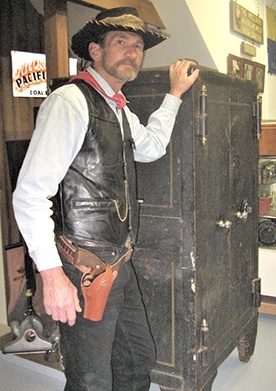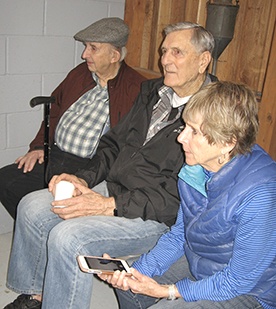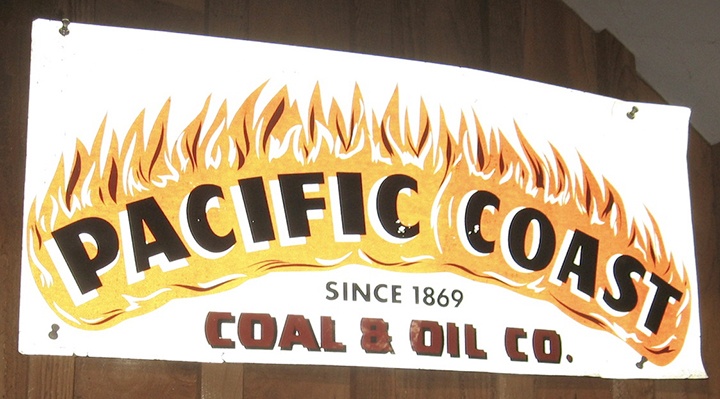Don’t try it. You’ll get caught. Safecracking can take a long, long time, even for professionals. A recent audience included 20 volunteers, history buffs, and serious but curious onlookers who watched with patience as a local master of the art did what his job title required; he’s a safe cracker.
At 10:15 last Thursday an hour began to crawl by with jokes on the sidelines. Locksmith Jeff Snopes, a specialist from Northwest Safe in Enumclaw, carried five toolboxes and a couple of tool pouches into Black Diamond Museum. His intent was to unlock an old safe. He was also well prepared with patience. Success arrived at 11:15 a.m. after Snopes drilled holes into a strategic location of an old combination lock attached to an even older business safe. The click of that lock brought laughter, handclapping and sighs of relief. Snopes had cracked the museum’s safe.
The safe had been donated to Black Diamond Museum a couple of decades ago. However, it arrived locked and without a key or combination that anyone currently remembered. Made by Seattle’s Purcell Safe Company, the safe weighed 1200 to 1500 pounds and stood on wheels. It is 51/2’ tall, three feet wide and 2½’ deep. The safe originally belonged to Pacific Coast Coal and Oil, a mining company that used it in the town of Lawson’s marketplace. After the 1910 Lawson Mine explosion, Pacific Coast moved the town and its marketplace downhill to Black Diamond near the lot where the museum in now located. In the late 1940’s the Zumek brothers, a pioneer family that included Tom, Joe and Frank, were local business entrepreneurs. They acquired ownership of Pacific Coast’s company store and used that safe in their “Groceries & Market” business on Railroad Avenue until 1963. Joe then opened his own Zumek Brothers Market on Third Avenue (Maple Valley Highway 169). The safe was re-located behind that store’s front window “so police can watch it” (according to hearsay). After he retired and sold the store, Joe eventually donated the safe to the museum.
Asked how old the safe might be, Snopes said he was trying to answer that question by checking mechanisms inside the lock. He was hoping to find where something had been drilled, then whispered out loud, “Oh yeah, this is retrofit.” The current lock holes were oblong instead of the old round type, he explained. The more modern lock had “lots of new parts.” It was not an antique. Snopes then guessed that the safe was from the 1930’s to 1950.
No one associated with the museum or with the safe’s previous owners could remember the combination. All joking aside, no one even knew if there was anything inside that locked box. History was safe until Jeff cracked it. It was empty.










